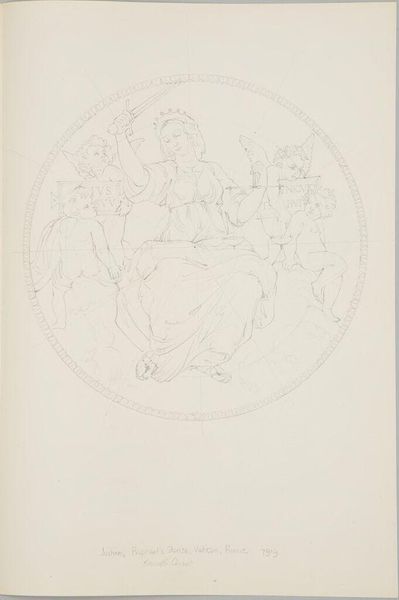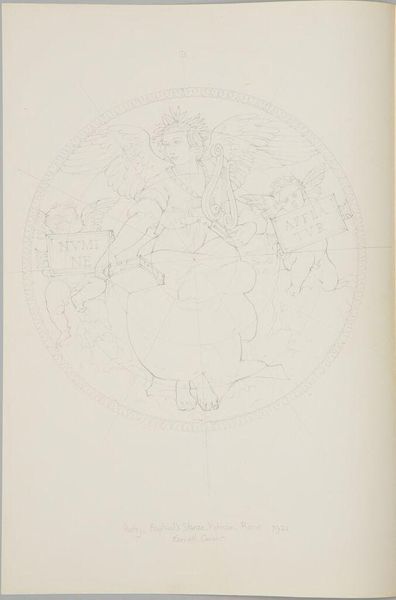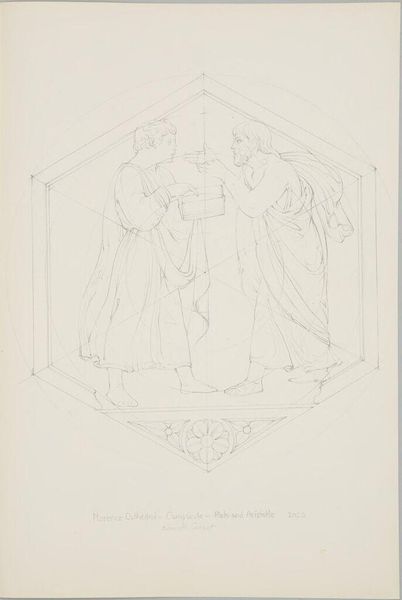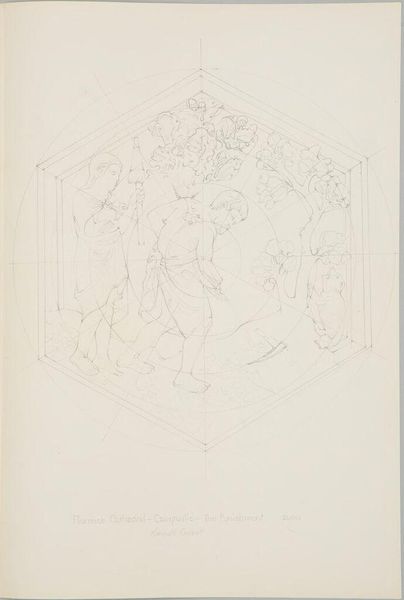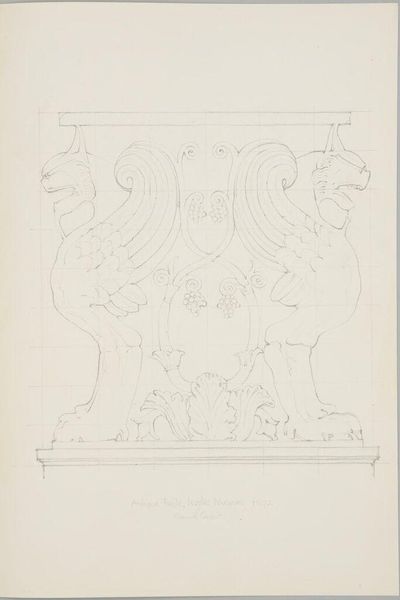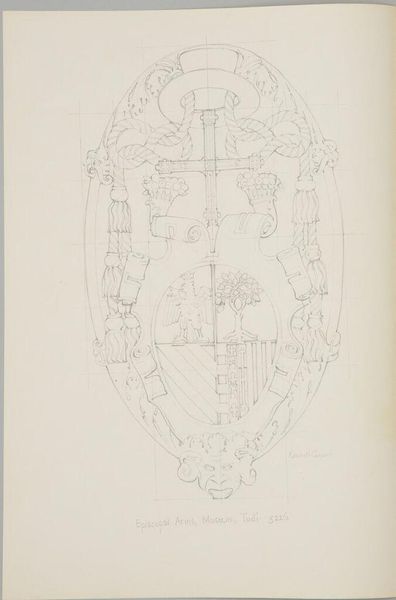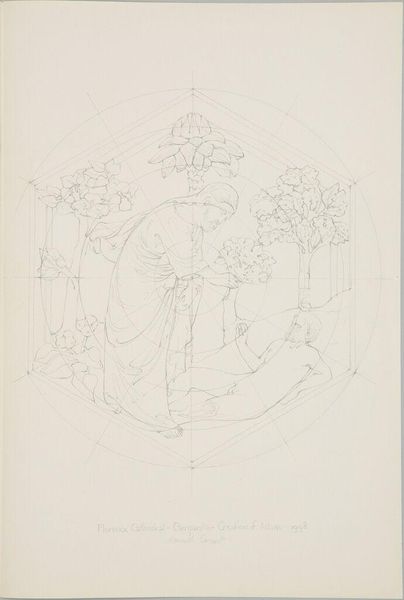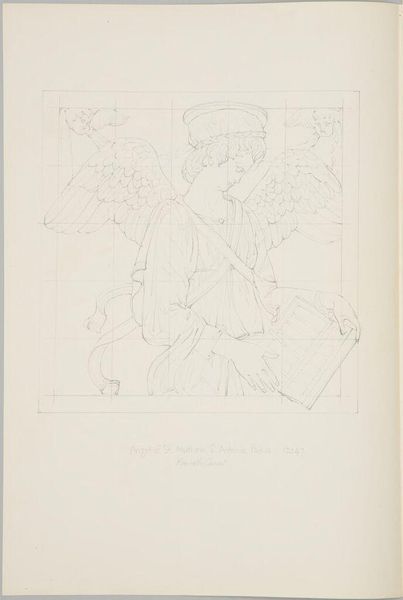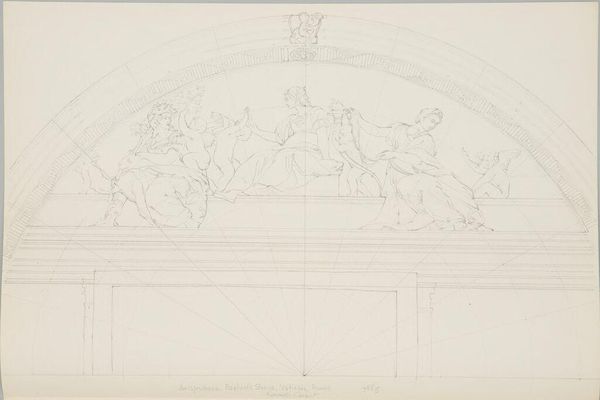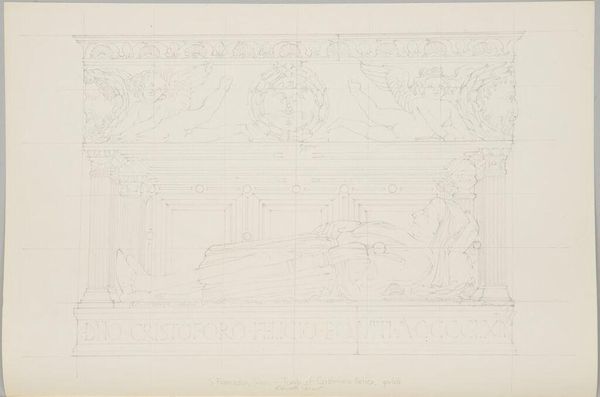
Detail of Theology, after Raphael, Raphael's Stanze, Vatican Palace, Rome, Italy c. 20th century
0:00
0:00
Dimensions: image: 18.8 cm (7 3/8 in.) sheet: 31.1 x 42.2 cm (12 1/4 x 16 5/8 in.) folded sheet: 31.1 x 21.1 cm (12 1/4 x 8 5/16 in.)
Copyright: CC0 1.0
Editor: This is a sketch by Kenneth John Conant, "Detail of Theology, after Raphael," a study of Raphael's Stanze in the Vatican. The circular composition, with the figure of Theology in the center, feels very classical and balanced. What significance do you see in its design? Curator: The circular format is indeed deliberate. Think of mandalas or cosmological diagrams. Circles often symbolize completeness, eternity, or the divine. Here, the central figure, wreathed and enthroned, embodies Theology itself, surrounded by supporting figures holding inscribed tablets. Consider what it meant, visually, to encapsulate such an abstract concept. Editor: So the circle and the figures work together to communicate not just an idea, but also its perceived importance? Curator: Precisely. It speaks to how the Renaissance mind ordered and visualized knowledge and belief. This sketch reveals an enduring quest to understand and represent profound ideas through symbolic forms. Editor: I’ll definitely look at Raphael differently now. Curator: Indeed, this sketch gives us insight into the visual language of cultural memory and continuity.
Comments
No comments
Be the first to comment and join the conversation on the ultimate creative platform.
